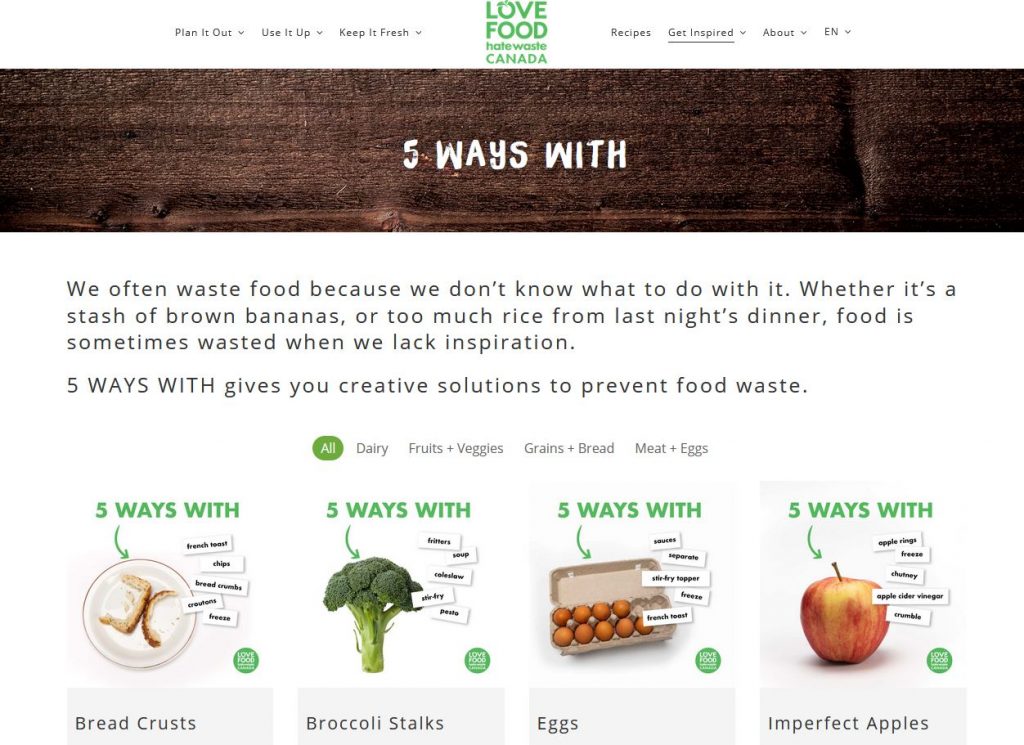![]()
Food waste in the home can often occur because of boredom or limited knowledge of how to use certain ingredients. A consumer may have leftovers in their fridge that they don’t want to waste, but can’t bear to eat one more time in the item’s current form while simultaneously not knowing how to repurpose the item for a new dish. Or perhaps they’ve acquired an edible item that’s completely new to them, so they’re not sure how to use it in the first place. This can happen when shoppers impulsively buy exotic produce or other ingredients at grocery stores without having performed research ahead of time–maybe the item just looked intriguing on the shelves, or its praises were sung by a friend or trusted podcast, prompting a desire for a new experience without adequate guidance.
This type of food waste also happens when food banks distribute fresh produce in an effort to promote healthy diets without simultaneously distributing tips on how to use the produce. Donated commodities may not always fall within the range of familiarity for a food recipient and they may find themselves having no idea what to do with the celery root or artichokes in their pre-packed food box.
Even if one is familiar with an ingredient, sometimes it loses its appeal when used in the same way time after time. Imagine a parent who frequently buys peas because their children love them. Those kids might become less receptive to the peas after having them prepared the same way at least once a week for a year. Below are several sites that provide inspiration for cooking unfamiliar foods or preparing familiar ones in new ways.
Recognizing that inspiration is as important a tool in keeping food out of landfills as compost piles and meal planning, the Love Food Hate Waste Canada website includes a section called “Get Inspired.” This section not only includes tips on how to preserve or store foods to prevent waste and meal planning, it also provides a page called “5 Ways With.” This page presents five interesting ways to use ingredients in the categories dairy, fruits & veggies, grains & bread, and meat & eggs.

For example, broccoli stalks can be used in fritters or pesto or as an addition to soups, salads, or stir-fry. Links to recipes are provided when the suggestion calls for more detailed instruction.
The flagship Love Food Hate Waste website, launched by the UK organization Waste & Resources Action Programme, or WRAP, includes a “Recipes” section that allows users to search for ideas based on dietary parameters, preparation difficulty, or cooking time.
CookIt from the Natural Resources Defense Council (NRDC) Save the Food website helps consumers find recipes for a wide variety of ingredients, including those that are commonly thrown out as scraps, such as overripe avocados or cheese rinds. It also provides ideas for transforming ingredients that are “past their prime” to get the most use out of available food. Some of the recipes are accompanied by videos of Chef Joel Gamoran making the recipe.

SuperCook allows users to search for recipes based on ingredients they have on hand. Similar tools include MyFridgeFood, Cookpad, Cookin’ with Google, and the Use Up Leftovers tool on the BigOven recipe database website.
The next time you’re faced with unfamiliar or uninspiring food, don’t throw it out! Get out your smartphone and consult these online tools and resources to find a way to make that edible appealing.
Note: This post was originally published on the ISTC Green Lunchroom Challenge blog, which is maintained by Technical Assistance Program staff. Check out that blog for more news, resources, and tips on preventing food waste and diverting food from landfills via rescue, repurposing, composting, and other strategies.

